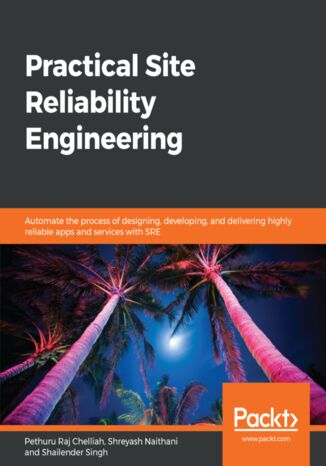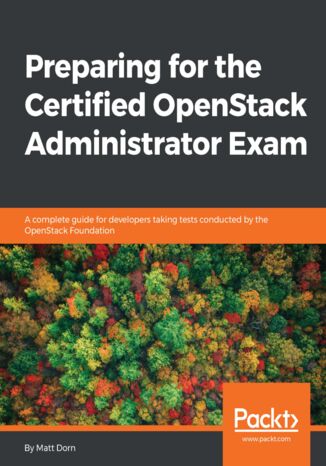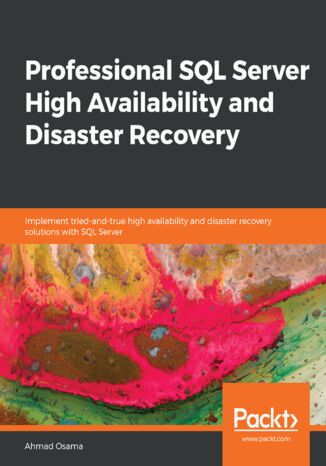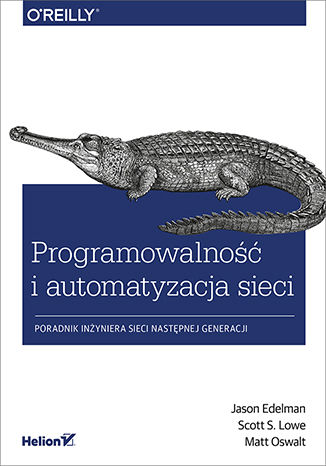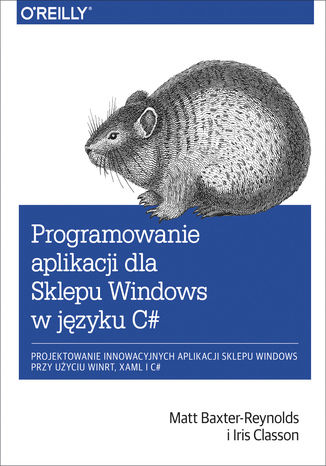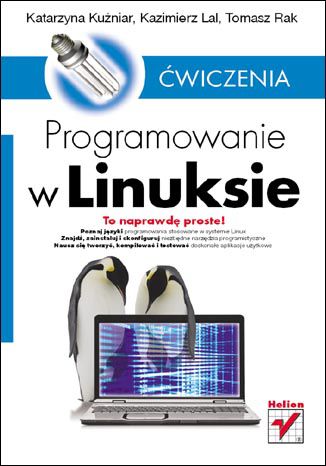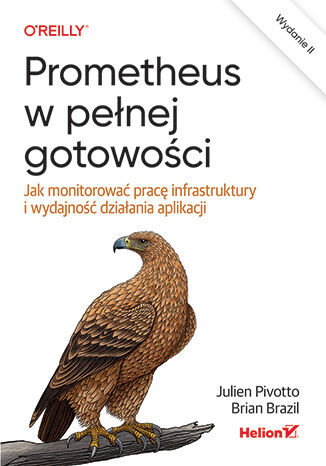Kategorien
E-Books
-
Wirtschaft
- Bitcoin
- Geschäftsfrau
- Coaching
- Controlling
- E-Business
- Ökonomie
- Finanzen
- Börse und Investitionen
- Persönliche Kompetenzen
- Computer im Büro
- Kommunikation und Verhandlungen
- Kleines Unternehmen
- Marketing
- Motivation
- Multimedia-Training
- Immobilien
- Überzeugung und NLP
- Steuern
- Sozialpolitik
- Handbȕcher
- Präsentationen
- Führung
- Public Relation
- Berichte, Analysen
- Geheimnis
- Social Media
- Verkauf
- Start-up
- Ihre Karriere
- Management
- Projektmanagement
- Personal (HR)
-
Für Kinder
-
Für Jugendliche
-
Bildung
-
Enzyklopädien, Wörterbücher
-
E-Presse
- Architektura i wnętrza
- Sicherheit und Gesundheit am Arbeitsplatz
- Biznes i Ekonomia
- Haus und Garten
- E-Business
- Ekonomia i finanse
- Esoterik
- Finanzen
- Persönliche Finanzen
- Unternehmen
- Fotografie
- Informatik
- HR und Gehaltsabrechnung
- Frauen
- Computer, Excel
- Buchhaltung
- Kultur und Literatur
- Wissenschaftlich und akademisch
- Umweltschutz
- meinungsbildend
- Bildung
- Steuern
- Reisen
- Psychologie
- Religion
- Landwirtschaft
- Buch- und Pressemarkt
- Transport und Spedition
- Gesundheit und Schönheit
-
Geschichte
-
Informatik
- Office-Programme
- Datenbank
- Bioinformatik
- IT Branche
- CAD/CAM
- Digital Lifestyle
- DTP
- Elektronik
- Digitale Fotografie
- Computergrafik
- Spiele
- Hacking
- Hardware
- IT w ekonomii
- Wissenschaftliche Pakete
- Schulbücher
- Computergrundlagen
- Programmierung
- Mobile-Programmierung
- Internet-Server
- Computernetzwerke
- Start-up
- Betriebssysteme
- Künstliche Inteligenz
- Technik für Kinder
- Webmaster
-
Andere
-
Fremdsprachen lernen
-
Kultur und Kunst
-
Lektüre
-
Literatur
- Anthologien
- Ballade
- Biografien und Autobiografien
- Für Erwachsene
- Drama
- Tagebücher, Memoiren, Briefe
- Epos
- Essay
- Science Fiction
- Felietonys
- Fiktion
- Humor, Satire
- Andere
- Klassisch
- Krimi
- Sachbücher
- Belletristik
- Mity i legendy
- Nobelpreisträger
- Kurzgeschichten
- Gesellschaftlich
- Okultyzm i magia
- Erzählung
- Erinnerungen
- Reisen
- Gedicht
- Poesie
- Politik
- Populärwissenschaftlich
- Roman
- Historischer Roman
- Prosa
- Abenteuer
- Journalismus
- Reportage
- Romans i literatura obyczajowa
- Sensation
- Thriller, Horror
- Interviews und Erinnerungen
-
Naturwissenschaften
-
Sozialwissenschaften
-
Schulbücher
-
Populärwissenschaft und akademisch
- Archäologie
- Bibliotekoznawstwo
- Filmwissenschaft
- Philologie
- Polnische Philologie
- Philosophie
- Finanse i bankowość
- Erdkunde
- Wirtschaft
- Handel. Weltwirtschaft
- Geschichte und Archäologie
- Kunst- und Architekturgeschichte
- Kulturwissenschaft
- Linguistik
- Literaturwissenschaft
- Logistik
- Mathematik
- Medizin
- Geisteswissenschaften
- Pädagogik
- Lehrmittel
- Populärwissenschaftlich
- Andere
- Psychologie
- Soziologie
- Theatrologie
- Teologie
- Theorien und Wirtschaftswissenschaften
- Transport i spedycja
- Sportunterricht
- Zarządzanie i marketing
-
Handbȕcher
-
Spielanleitungen
-
Professioneller und fachkundige Leitfaden
-
Jura
- Sicherheit und Gesundheit am Arbeitsplatz
- Geschichte
- Verkehrsregeln. Führerschein
- Rechtswissenschaften
- Gesundheitswesen
- Allgemeines. Wissenskompendium
- akademische Bücher
- Andere
- Bau- und Wohnungsrecht
- Zivilrecht
- Finanzrecht
- Wirtschaftsrecht
- Wirtschafts- und Handelsrecht
- Strafrecht
- Strafrecht. Kriminelle Taten. Kriminologie
- Internationales Recht
- Internationales und ausländisches Recht
- Gesundheitsschutzgesetz
- Bildungsrecht
- Steuerrecht
- Arbeits- und Sozialversicherungsrecht
- Öffentliches, Verfassungs- und Verwaltungsrecht
- Familien- und Vormundschaftsrecht
- Agrarrecht
- Sozialrecht, Arbeitsrecht
- EU-Recht
- Industrie
- Agrar- und Umweltschutz
- Wörterbücher und Enzyklopädien
- Öffentliche Auftragsvergabe
- Management
-
Führer und Reisen
- Afrika
- Alben
- Südamerika
- Mittel- und Nordamerika
- Australien, Neuseeland, Ozeanien
- Österreich
- Asien
- Balkan
- Naher Osten
- Bulgarien
- China
- Kroatien
- Tschechische Republik
- Dänemark
- Ägypten
- Estland
- Europa
- Frankreich
- Berge
- Griechenland
- Spanien
- Niederlande
- Island
- Litauen
- Lettland
- Mapy, Plany miast, Atlasy
- Miniführer
- Deutschland
- Norwegen
- Aktive Reisen
- Polen
- Portugal
- Andere
- Przewodniki po hotelach i restauracjach
- Russland
- Rumänien
- Slowakei
- Slowenien
- Schweiz
- Schweden
- Welt
- Türkei
- Ukraine
- Ungarn
- Großbritannien
- Italien
-
Psychologie
- Lebensphilosophien
- Kompetencje psychospołeczne
- zwischenmenschliche Kommunikation
- Mindfulness
- Allgemeines
- Überzeugung und NLP
- Akademische Psychologie
- Psychologie von Seele und Geist
- Arbeitspsychologie
- Relacje i związki
- Elternschafts- und Kinderpsychologie
- Problemlösung
- Intellektuelle Entwicklung
- Geheimnis
- Sexualität
- Verführung
- Aussehen ind Image
- Lebensphilosophien
-
Religion
-
Sport, Fitness, Diäten
-
Technik und Mechanik
Hörbücher
-
Wirtschaft
- Bitcoin
- Geschäftsfrau
- Coaching
- Controlling
- E-Business
- Ökonomie
- Finanzen
- Börse und Investitionen
- Persönliche Kompetenzen
- Kommunikation und Verhandlungen
- Kleines Unternehmen
- Marketing
- Motivation
- Immobilien
- Überzeugung und NLP
- Steuern
- Sozialpolitik
- Handbȕcher
- Präsentationen
- Führung
- Public Relation
- Geheimnis
- Social Media
- Verkauf
- Start-up
- Ihre Karriere
- Management
- Projektmanagement
- Personal (HR)
-
Für Kinder
-
Für Jugendliche
-
Bildung
-
Enzyklopädien, Wörterbücher
-
E-Presse
-
Geschichte
-
Informatik
-
Andere
-
Fremdsprachen lernen
-
Kultur und Kunst
-
Lektüre
-
Literatur
- Anthologien
- Ballade
- Biografien und Autobiografien
- Für Erwachsene
- Drama
- Tagebücher, Memoiren, Briefe
- Epos
- Essay
- Science Fiction
- Felietonys
- Fiktion
- Humor, Satire
- Andere
- Klassisch
- Krimi
- Sachbücher
- Belletristik
- Mity i legendy
- Nobelpreisträger
- Kurzgeschichten
- Gesellschaftlich
- Okultyzm i magia
- Erzählung
- Erinnerungen
- Reisen
- Poesie
- Politik
- Populärwissenschaftlich
- Roman
- Historischer Roman
- Prosa
- Abenteuer
- Journalismus
- Reportage
- Romans i literatura obyczajowa
- Sensation
- Thriller, Horror
- Interviews und Erinnerungen
-
Naturwissenschaften
-
Sozialwissenschaften
-
Populärwissenschaft und akademisch
- Archäologie
- Philosophie
- Wirtschaft
- Handel. Weltwirtschaft
- Geschichte und Archäologie
- Kunst- und Architekturgeschichte
- Kulturwissenschaft
- Literaturwissenschaft
- Mathematik
- Medizin
- Geisteswissenschaften
- Pädagogik
- Lehrmittel
- Populärwissenschaftlich
- Andere
- Psychologie
- Soziologie
- Teologie
- Zarządzanie i marketing
-
Handbȕcher
-
Professioneller und fachkundige Leitfaden
-
Jura
-
Führer und Reisen
-
Psychologie
- Lebensphilosophien
- zwischenmenschliche Kommunikation
- Mindfulness
- Allgemeines
- Überzeugung und NLP
- Akademische Psychologie
- Psychologie von Seele und Geist
- Arbeitspsychologie
- Relacje i związki
- Elternschafts- und Kinderpsychologie
- Problemlösung
- Intellektuelle Entwicklung
- Geheimnis
- Sexualität
- Verführung
- Aussehen ind Image
- Lebensphilosophien
-
Religion
-
Sport, Fitness, Diäten
-
Technik und Mechanik
Videokurse
-
Datenbank
-
Big Data
-
Biznes, ekonomia i marketing
-
Cybersicherheit
-
Data Science
-
DevOps
-
Für Kinder
-
Elektronik
-
Grafik / Video / CAX
-
Spiele
-
Microsoft Office
-
Entwicklungstools
-
Programmierung
-
Persönliche Entwicklung
-
Computernetzwerke
-
Betriebssysteme
-
Softwaretest
-
Mobile Geräte
-
UX/UI
-
Web development
-
Management
Podcasts
- E-Books
- Informatik
- Betriebssysteme
Betriebssysteme
In dieser Kategorie unserer Online-Bibliothek finden Sie Bücher zu Betriebssystemen. Einige von ihnen sind eine Einführung in Software wie Windows, Linux oder Android. Andere befassen sich mit technischeren Fragen bezüglich der Konfiguration dieser Systeme und der auf ihnen verwendeten Tools, wie z. B. Ansible.
Security automation is the automatic handling of software security assessments tasks. This book helps you to build your security automation framework to scan for vulnerabilities without human intervention.This book will teach you to adopt security automation techniques to continuously improve your entire software development and security testing. You will learn to use open source tools and techniques to integrate security testing tools directly into your CI/CD framework. With this book, you will see how to implement security inspection at every layer, such as secure code inspection, fuzz testing, Rest API, privacy, infrastructure security, and web UI testing. With the help of practical examples, this book will teach you to implement the combination of automation and Security in DevOps. You will learn about the integration of security testing results for an overall security status for projects.By the end of this book, you will be confident implementing automation security in all layers of your software development stages and will be able to build your own in-house security automation platform throughout your mobile and cloud releases.
Pethuru Raj Chelliah, Shreyash Naithani, Shailender Singh
Site reliability engineering (SRE) is being touted as the most competent paradigm in establishing and ensuring next-generation high-quality software solutions.This book starts by introducing you to the SRE paradigm and covers the need for highly reliable IT platforms and infrastructures. As you make your way through the next set of chapters, you will learn to develop microservices using Spring Boot and make use of RESTful frameworks. You will also learn about GitHub for deployment, containerization, and Docker containers. Practical Site Reliability Engineering teaches you to set up and sustain containerized cloud environments, and also covers architectural and design patterns and reliability implementation techniques such as reactive programming, and languages such as Ballerina and Rust. In the concluding chapters, you will get well-versed with service mesh solutions such as Istio and Linkerd, and understand service resilience test practices, API gateways, and edge/fog computing.By the end of this book, you will have gained experience on working with SRE concepts and be able to deliver highly reliable apps and services.
This book provides you with a specific strategy to pass the OpenStack Foundation’s first professional certification: the Certified OpenStack Administrator. In a recent survey, 78% of respondents said the OpenStack skills shortage had deterred them from adopting OpenStack. Consider this an opportunity to increase employer and customer confidence by proving you have the skills required to administrate real-world OpenStack clouds.You will begin your journey by getting well-versed with the OpenStack environment, understanding the benefits of taking the exam, and installing an included OpenStack All-in-One Virtual Appliance to work through objectives covered throughout the book. After exploring the basics of the individual services, you will be introduced to strategies to accomplish the exam objectives relevant to Keystone, Glance, Nova, Neutron, Cinder, Swift, Heat, and troubleshooting.Finally, you’ll benefit from the special tips section and a practice exam to put your knowledge to the test. By the end of the journey, you will be ready to become a Certified OpenStack Administrator!
Professional SQL Server High Availability and Disaster Recovery explains the high availability and disaster recovery technologies available in SQL Server: Replication, AlwaysOn, and Log Shipping. You’ll learn what they are, how to monitor them, and how to troubleshoot any related problems. You will be introduced to the availability groups of AlwaysOn and learn how to configure them to extend your database mirroring. Through this book, you will be able to explore the technical implementations of high availability and disaster recovery technologies that you can use when you create a highly available infrastructure, including hybrid topologies. Note that this course does not cover SQL Server Failover Cluster Installation with shared storage.By the end of the book, you’ll be equipped with all that you need to know to develop robust and high performance infrastructure.
Programowalność i automatyzacja sieci. Poradnik inżyniera sieci następnej generacji
Jason Edelman, Scott S. Lowe, Matt Oswalt
Programowalna i zautomatyzowana sieć upraszcza pracę jej administratora. Rozwój technologii radykalnie komplikuje takie zadania jak zarządzanie i operowanie sprzętem sieciowym, topologiami sieci i połączeniami sieciowymi. Trzeba tu mieć na uwadze systemy operacyjne, nowe metodologie oraz narzędzia. W takich warunkach zarządzanie większą czy nieco bardziej złożoną siecią wyłącznie za pomocą działań manualnych jest obarczone sporym ryzykiem. Profesjonalny inżynier sieciowy musi dziś dobrze orientować się w świecie programowalności i automatyzacji sieci. Powinien poznawać nowe protokoły, technologie, modele dostarczania i pojawiające się w związku z nimi potrzeby biznesowe. W tej książce znajdziesz solidne podstawy pozwalające zapewnić sieci programowalność i zautomatyzowanie jej pracy. Dowiesz się, jakie narzędzia i umiejętności będą potrzebne do dokonania tego kluczowego przekształcenia w sieć nowej generacji. W bardzo przystępny i praktyczny sposób wyjaśniono, jak korzystać z takich technologii jak Linux, Python, JSON i XML, aby programowo zautomatyzować pracę systemu. Opisano koncept modeli danych, podstawy języka YANG oraz najważniejsze technologie związane z API. Sporo miejsca poświęcono narzędziom open source służącym do automatyzacji pracy sieci. Znalazły się tu również informacje o interfejsach macvlan, sieciach wykorzystujących maszyny wirtualne, sieciowych przestrzeniach nazw oraz o bibliotece Pythona NAPALM i jej integracji z narzędziami: Ansible, Salt i StackStorm. W książce między innymi: powstanie sieci sterowanych programowo technologie automatyzacji sieci Linux i Python a technologie sieciowe praca z szablonami konfiguracji sieciowej kontrola źródła w pracy z niektórymi serwisami online prosty przepływ pracy w automatyzacji sieci Sieć zautomatyzowana i programowalna - najlepszy przyjaciel admina!
Matt Baxter-Reynolds, Iris Classon
Ten praktyczny poradnik pozwoli każdemu deweloperowi .NET zainteresowanemu tworzeniem aplikacji dla tabletów przejść krok po kroku proces budowania aplikacji typu Sklepu Windows. Pokazuje, jak posługiwać się językiem projektowania Modern UI dla systemu Windows 8.1 i mechanizmami WinRT 8.1.1 na przykładzie tworzenia biznesowej aplikacji mobilnej przy użyciu języka C#. W trakcie projektowania aplikacji użyte zostaną te same szczegóły systemowe i specyfikacje, które dotyczą aplikacji komercyjnych, takie jak trwałość, usługi tła oraz funkcje udostępniania i wyszukiwania systemu Windows 8. Pokazane zostanie projektowanie kodu, dołączanie produktów open source i tworzenie pakietu dystrybucyjnego dla Sklepu Windows. - Budowanie interfejsu użytkownika przy użyciu XAML oraz wzorca Model/View/View-Model - Istota asynchronicznego przetwarzania i ponowne poznanie wątków i równoległości - Przechowywanie danych i ustawień systemu za pomocą SQLite - Stosowanie paska aplikacji dla poleceń i ustawień - Prezentowanie powiadomień jako aktualizacji kafelka, etykiet lub wyskakujących komunikatów - Wizualizacja lokalizacji i aktywności na mapach - Włączanie udostępniania danych i równoległego działania aplikacji w interfejsie użytkownika - Implementacja wykonywania zadań w tle Matt Baxter-Reynolds jest niezależnym konsultantem w dziedzinie programowania, szkoleniowcem i autorem mieszkającym w Wielkiej Brytanii. Jego preferowaną metodą komu-nikacji z podobnie myślącymi osobami jest Twitter: @mbrit. Iris Classon ma tytuł MVP w dziedzinie C#. Publikuje w witrynie Pluralsight i jest szeroko znana jako wykładowca i bloger. Uzyskała kilikanaście certyfikatów w dziedzinie pro-jektowania .NET, specjalizując się w tworzeniu aplikacji klienckich i programowania Windows Phone.
Programowanie w Linuksie. Ćwiczenia
Tomasz Rak, Katarzyna Kuźniar, Kazimierz Lal
Programowanie w Linuksie? To naprawdę proste! Poznaj języki programowania stosowane w systemie Linux Znajdź, zainstaluj i skonfiguruj niezbędne narzędzia programistyczne Naucz się tworzyć, kompilować i testować doskonałe aplikacje użytkowe Systemy należące do rodziny Linux zdobyły ogromną popularność jako stabilne, wydajne, bezpieczne i darmowe środowiska operacyjne zarówno wśród użytkowników prywatnych, jak i wielkich korporacji. Dziś środowiska te można spotkać już niemal wszędzie, a różne dystrybucje walczą o palmę pierwszeństwa i bez kompleksów konkurują z zamkniętymi komercyjnymi systemami, takimi jak MS Windows czy Mac OS X. Wzrostowi popularności Linuksa wśród "zwykłych" użytkowników towarzyszy oczywiście wzrost zapotrzebowania na oprogramowanie użytkowe, ponieważ nikt nie będzie chciał korzystać z systemu operacyjnego, jeśli nie będzie w stanie znaleźć odpowiednich dla siebie narzędzi pracy. Wielu programistów niechętnie odnosi się do tworzenia aplikacji działających pod Linuksem, ponieważ wydaje im się, że brak w nim odpowiednich narzędzi, system stawia im wyższe wymagania, a sam kod pisze się trudniej. Tymczasem Linux obsługuje się podobnie jak inne systemy, a możliwości, jakie proponuje, są naprawdę spore. "Programowanie w Linuksie. Ćwiczenia" to książka, która w praktyczny sposób prezentuje najbardziej popularne języki programowania w tym systemie oraz ich zastosowania. Pomaga też wyposażyć warsztat programisty w bezpłatne narzędzia i właściwie je skonfigurować. Informuje, jak rozpocząć tworzenie aplikacji i rozwinąć swoje umiejętności. Przegląd najpopularniejszych języków programowania w Linuksie Wybór, instalacja oraz konfiguracja narzędzi i środowisk programistycznych Konfiguracja i korzystanie z edytorów kodu oraz kompilatorów Wykrywanie i poprawianie błędów w programach Automatyzacja pracy programisty dzięki użyciu skryptów Tworzenie aplikacji graficznych, systemowych i sieciowych Programowanie wielowątkowe Generowanie i przetwarzanie plików w różnych formatach Odkryj moc drzemiącą w Linuksie! Naucz się w nim programować!
Monitorowanie wydajności systemu jest ważnym zadaniem i nie polega tylko na obserwacji pracy procesora. Trzeba się orientować, pod jakim obciążeniem pracuje baza danych, czy przepustowość urządzeń sieciowych jest wystarczająca i jaki jest koszt niepełnego użycia bufora. Warto też wiedzieć, czy stopień wykorzystania droższych elementów uzasadnia ich utrzymywanie. W tej książce znajdziesz bezcenne wskazówki dotyczące wdrażania serwera Prometheus i jego używania w rzeczywistych rozwiązaniach. Julius Volz, współtwórca oprogramowania Prometheus To drugie, zaktualizowane wydanie przewodnika po systemie Prometheus. Znajdziesz w nim wyczerpujące wprowadzenie do tego oprogramowania, a także wskazówki dotyczące monitorowania aplikacji i infrastruktury, tworzenia wykresów, przekazywania ostrzeżeń, bezpośredniej instrumentacji kodu i pobierania wskaźników pochodzących z systemów zewnętrznych. Zrozumiesz zasady konfiguracji systemu Prometheus, komponentu Node Exporter i menedżera ostrzeżeń Alertmanager. Zapoznasz się też z nowymi funkcjonalnościami języka PromQL, dostawców mechanizmu odkrywania usług i odbiorców menedżera ostrzeżeń Alertmanager. Dokładnie zaprezentowano tu również zagadnienia bezpieczeństwa po stronie serwera, w tym mechanizm TLS i uwierzytelniania podstawowego. W książce między innymi: czym jest Prometheus i jak wygląda jego architektura monitorowanie infrastruktury za pomocą komponentów takich jak Node Exporter instrumentacja w kodzie aplikacji tworzenie paneli sterowania za pomocą Grafany współpraca oprogramowania Prometheus i Kubernetes Dzięki najlepszym praktykom i wskazówkom dotyczącym instrumentacji w kodzie ta książka pomoże Ci w niezawodnym monitorowaniu usług! TJ Hoplock, starszy inżynier monitorowania, NS1


